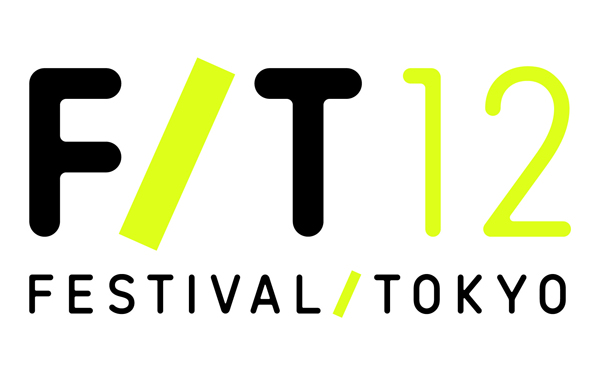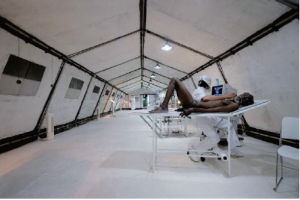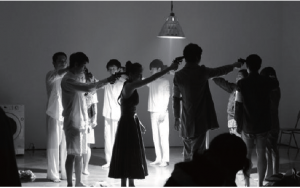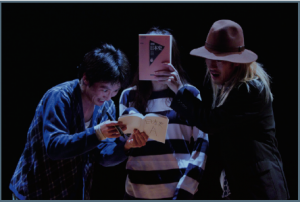International arts festival returns to Tokyo
Centered around the Ikebukuro area and celebrating performing arts, ‘Festival/Tokyo’ is back this autumn for its fifth edition, taking place between October 27 and November 25.
Held annually as an international arts festival representing not only Tokyo and Japan but also the whole of Asia, Festival/Tokyo is renowned for its cutting-edge line-up of domestic and overseas artists, and its program of interactive and participatory events.
Last year’s festival was a response to the terrible catastrophe that struck Japan in 2011, its theme – ‘What can we say?’ – sought to re-connect with our lost sense of reality through the power of the arts. It presented a packed and globally acclaimed program of performances and projects envisioning a new future, and F/T 12 follows on from that.
Instead of forgetting about last year’s tragic events, the Festival will aim to memorize and discuss it, then use it as a seed towards future creation and the rehabilitation of the disaster zones. This year, the Festival’s organisers say that it “will look at the social problems that have become apparent since the catastrophe, turning its eyes and ears to brave art that tackles these issues critically.”
They say that “A unique creativity has emerged from post-disaster Japan, and along with ground-breaking local theatre, F/T 12 will act as a site for artistic encounters.”
The Tokyo Metropolitan Theatre re-opened last September and will be utilized by the Festival in a range of satellite events, becoming a hub for F/T. As other events planned for Ikebukuro Nishiguchi Park also take place, so too will the energy of the Festival spill to, F/T hopes, infect the whole area.
If you wish to see some of the performances at F/T 12 but worry about the language barrier, fear not: there are plenty of performances with subtitles. There are also many productions that are performed in other languages, such as German or Korean, or are otherwise comprehensible no matter what level your Japanese is.
Highlights of Festival / Tokyo
Here is a selection of recommended productions for non-Japanese speaking audiences at Festival/Tokyo:
Le Préau d’un Seul by Jean Michel Bruyère
Confronting head-on the issue of the roughly 240 immigration camps scattered around Europe, this installation-style theatre work has previously appeared at numerous international festivals, with its striking approach earning both praise and controversy.
“Le Préau d’un Seul” (which means ‘the courtyard of one”) is an multi-parts installation that utilize all the spaces of the Nishi-Sugamo Arts Factory, including a performance inside a tent that evokes an immigrant camp.
The installation itself, “Le Chemin des Damastes” (‘the path of Damastes’) features animated beds, as well as a new part created during the company’s time in Tokyo. Audiences will experience the program by moving to the venue according to a decided route, entering and leaving any time they wish, and creating a unique cognitive space that fully uses all the senses.
Castle of Dreams by Daisuke Miura (potudo-ru)
With its graphic, dense portrait of the workings of humanity, Daisuke Miura has become quite well-known in the artistic community. “Castle of Dreams” depicts a single-room apartment in which eight men and women live.
Futon, clothes, food, magazines and rubbish are scattered over the floor, leaving no place to step. The residents never speak: they only sleep, wake up, eat, fight and have sex. Given over only to their instincts, more than a glimpse into the life of humanity, the audience feels like observers (or voyeurs?) of an animal ecosystem. Without exchanging words with each other, the inhabitants of the room live engulfed in their desires.
Steps-Memories – Returned of the Oppressed by Hansol Yoon (greenpig)
First performed in Korea back in 2010, the program is composed of references to testimonies from survivors of the Korean War, and theoretical texts, as well as the historical space itself where the performance took place. At F/T 12, the production company will use the whole of the Nishi-Sugamo Arts Factory building, a former junior high school, creating a new Tokyo version of the performance.
The play will tackle the Korean War, which erupted in 1950 and divided the peninsula into North and South. The history of Korea cannot be isolated from Japan’s, and the performance will also reflect this, as well as the situation in Japan following the earthquake and tsunami, evoking the need to talk about our realities and memories.
DAH-DAH-SKO-DAH-DAH by Saburo Teshigawara
Saburo Teshigawara is a leader of the art and dance scene, famed for his aesthetic fusing intellect, movement, stage design and lighting. “DAH-DAH-SKO-DAH-DAH” is inspired by a long poem, “Haratai kenbairen”, written by Kenji Miyazawa and themed around the kenbai folk dance practiced for over a hundred years in a northern village of Iwate prefecture.
Teshigawa drew inspiration from the musical poem to compose a piece expressing the beating of the taiko drums, the sound of the wind, and the pulsing of the heart.
The Absence of Neighbor Jimmy by Yudai Kamisato (Okazaki Art Theatre)
Following his immigration and Fukushima-related F/T debut last year, Yudai Kamisato’s Okazaki Art Theatre is back this time with a new theme, “Neighbours”.
‘How much do we know about our neighbours?’ and ‘Aren’t we surely making assessments on them while we don’t know?’ asks Kamisato.
As for of his creative methodology for this new work, Kamisato spent some time in Korea, a country unmistakably Japan’s “neighbour” whether viewed historically, culturally, politically, economically or geographically.
The play will create forms of human relativity: viewing the neighbour from the neighboring side; viewing yourself from the neighbouring side; being viewed; viewing the neighbour from yourself.
Gay Romeo by Daniel Kok (daniel kok diskodanny)
From the Emerging Artists Program, Daniel Kok blends video with dance and focuses on the relationship with the audience. This interactive performance is born out of an awareness of the audience members as individuals, and starts with the dates he goes on with men he meets on the website gayromeo.com.
On stage he will then introduce anniversary gifts and even do a pole dance. Meanwhile, in the audience will be his actual partners from the dates.
F/T Mob
Unless you’ve been living without Internet for the past year, you’ll have seen footage of “flash mobs” – or perhaps experienced them first hand: a group of people assemble suddenly in a public space (airport, train station, plaza) and perform a shared activity, often for the purposes of entertainment, and indeed artistic expression.
This year, Participants will transform F/Tʼs home turf of Ikebukuro for many flash mob happenings on the weekends; all you need do is memorize the choreography that is released online – keep an eye on the website, here – beforehand, and then gather at the location. Of course, passers-by may also find themselves joining in!
For more information please see the Festival/Tokyo website, here. Many thanks to Festival/Tokyo for allowing us to use images.
by Vivian Morelli












